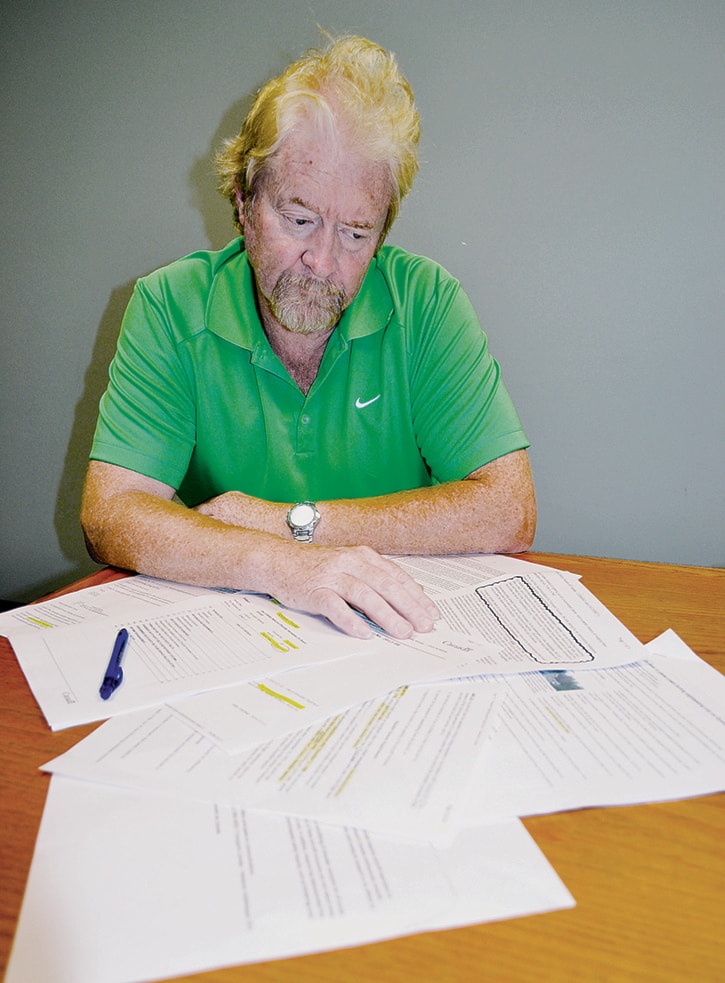As a South Surrey couple’s push for small-aircraft safety reforms continues to gather support, officials with Transport Canada now say a key request for change – for the use of shoulder harnesses to be mandated in older planes – is “not practical or feasible,” and would endanger passengers.
“Most of these aircraft structures are not robust enough to support shoulder restraints in the event of a crash,” senior communications advisor Mélany Gauvin told Peace Arch News by email this week.
“In addition, research has demonstrated that shoulder harnesses would introduce new and unanticipated safety hazards, such as hindering evacuation during an accident.”
Greg Sewell – who, with his wife, Fran, has been pushing for changes since their daughter Lauren died in a small-aircraft crash three years ago – was livid at the response.
“This is a bunch of garbage,” Sewell said Wednesday. “For this individual to say it’s not practical or feasible, that’s reprehensible.”
The Transport Canada statement was received Tuesday, after PAN requested clarification on the agency’s position with regard to the shoulder harnesses. Previous statements have noted that Transport Canada encourages use of the harnesses “where available.” They are mandated in small aircraft (with nine passenger seats or less) manufactured after Dec. 12, 1986, but have been recommended for older aircraft repeatedly over the past two decades in both Transportation Safety Board and coroners’ reports.
A service bulletin issued 20 years ago by the manufacturer of the plane Lauren Sewell and her boyfriend, Dallas Smith, were travelling in – Smith died on impact in the crash – strongly urged owners/operators to retrofit their aircrafts with shoulder harness kits for all occupants within a year.
Sewell noted Transport Canada has acknowledged in its own documents – including in one issued last November – that the use of shoulder harnesses in conjunction with a safety belt “can reduce serious injuries to the head, neck and upper torso of aircraft occupants and has the potential to reduce fatalities of occupants involved in an otherwise survivable accident.”
The conflicting messages are frustrating, Sewell said.
“They continue to point out the merits of shoulder restraints yet somebody has made a statement that it’s not practical or feasible… Are they saying the value of a life is not worth the cost of retrofitting?”
Lauren Sewell, 24, suffered an unsurvivable head injury in the August 2012 crash, but the coroner told her parents she would have likely survived had she been wearing a shoulder harness. The coroner’s report, issued last October, recommended such planes be retrofitted.
While Gauvin told PAN that the Sewells were advised of Transport Canada’s latest position in July, Sewell said he has never seen such definitive language. A response from Minister of Transport Lisa Raitt received earlier this month regarding recommendations they hand-delivered to the minister’s Ottawa and Milton offices last November was far more vague.
After offering her condolences on Lauren’s death, Raitt states that “Transport Canada takes very seriously all aviation accidents and any associated recommendations submitted by the Transportation Safety Board or contained in Coroners’ Reports. Allow me to assure you that the Department reviewed all information received and devoted significant effort to improving safety in the areas identified in the recommendation related to this unfortunate accident.”
PAN also asked Transport Canada for access to the research cited in Tuesday’s response, however, Gauvin said by email Thursday “there is no one source.”
She noted that the previous statement regarding the use of shoulder harnesses “was related to all aircraft, not small aircraft specifically.”
“There is no one-size-fits-all solution for this issue,” Gauvin writes. “Whether or not an operator is required to install a shoulder harness depends on a number of factors, such as the type of aircraft, the orientation of the seats and, in some instances, the age of the aircraft.”
Sewell said his resolve to see changes has only been strengthened by the latest statements.
An e-petition on a website he and Fran launched earlier this month – www.smallaircraftsafetyreform.com – has garnered “a few hundred” signatures so far.
Sewell said he is heartened by comments from small-aircraft operators who noted a resolve to install shoulder-harness kits after reading the family’s story, but his frustration with those who have the power to effect widespread change continues.
“They just continue to stick their head in the sand,” he said. “What are these people doing to improve the safety of the flying public?”
